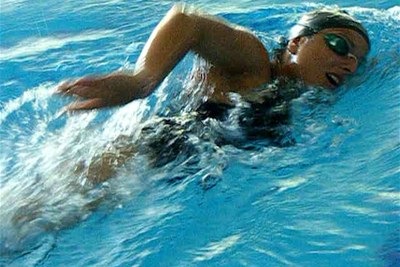INESC TEC develops wireless swimming costume to monitor swimmers
INESC TEC, in partnership with the University of Minho and the Faculty of Sports of the University of Porto, have developed training equipment that allows competitive coaches and swimmers to measure their biometric parameters and performance to improve their knowledge and gain better results.
27th January 2012
The project is called BIOSWIM - Body Interface System based on Wearable Integrated Monitorization. It is a system that works with the body for integrated monitoring and it can be used by athletes, non professional swimmers or patients in physiotherapeutic rehabilitation. It is a universal solution that monitors the physical and biomedical signs of a swimmer in training both in and out of the water and it can be used in all water sports and water activities.
The project aim was to create a swimming costume with around 20 sensors placed in strategic points to analyse biomechanical and physiological parameters as well as the swimmer’s performance. This device monitors heart rate, muscular activity, limb acceleration, palmar pressure, tympanic temperature, respiratory rate and swimming speed.
The swimsuit is composed of electronic sensors and integrated materials and the data is sent using a wireless system for analysis in real-time or it can be saved for later analysis. Therefore, the coach can use this data to complement their assessment of the athlete’s performance, to perfect their technique and also watch for warning signs or signs of fatigue.
BIOSWIM began in 2006 as a proposal by researchers from 2C2T, the Algoritmi Centre from the University of Minho, INESC TEC and the Faculty of Sports at the University of Porto. The project officially began at the end of 2007 with support from the Foundation for Science and Technology. Sara Oliveira, a swimmer from the Porto Club that represented Portugal in the Olympic Games in Peking in 2008, also participated in the project. In the future, this equipment could be applied in other sports and areas that range from health to leisure.


